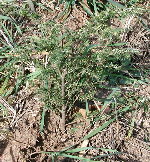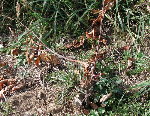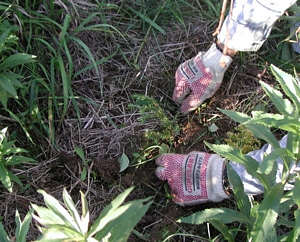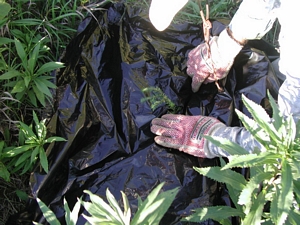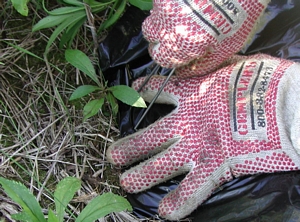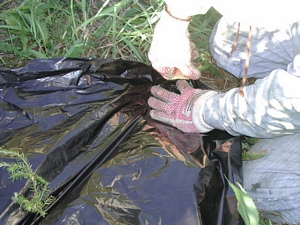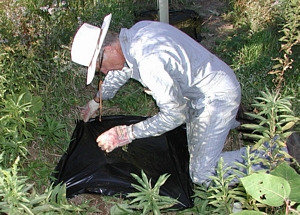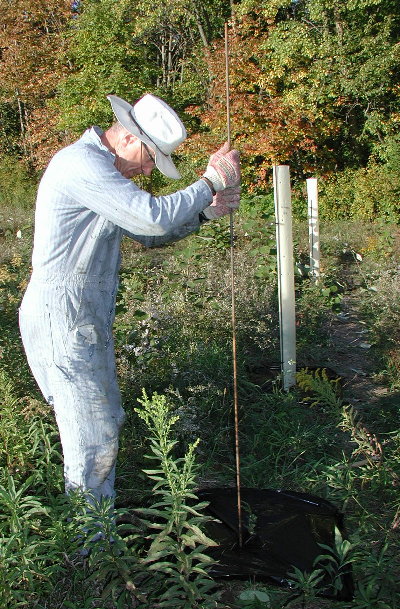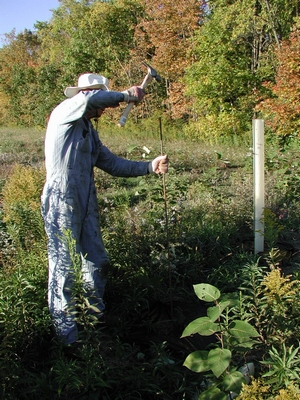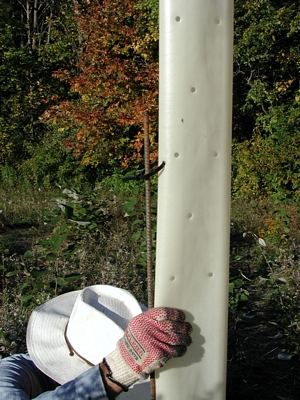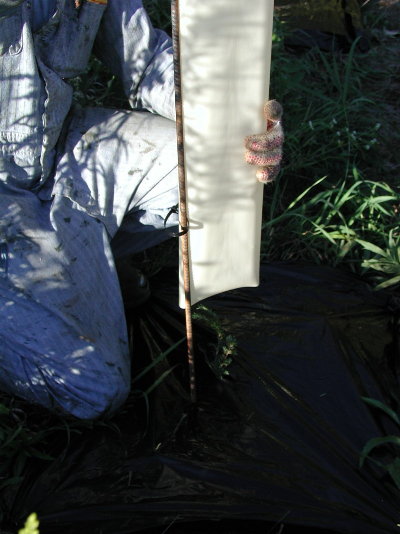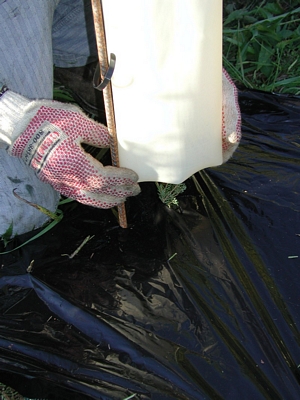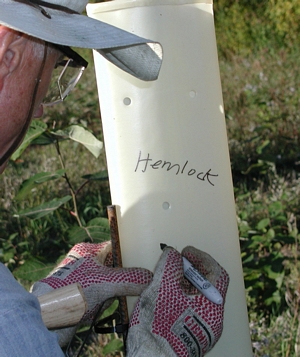Summer 2007 New Tree Tubes for the Plantation
Deer pose a SERIOUS threat to new seedlings. Deer nip the terminal bud of little seedlings for a snack during the winter. The tree is set back a year while a new terminal bud develops. If a seedling has the misfortune to be nipped a few years in a row, it very well may die. Further, with frequent nipping of leader buds, the tree will grow deformed into a shrub. Another trick that deer do is to rub young trees with their horns either breaking them off or scarring their young stem bark.
There are TOO many deer in Wisconsin. The Forestry half of the Wisconsin DNR knows there are too many deer and that natural forest regeneration is seriously impacted by current deer populations. The Hunting half of the Wisconsin DNR wins because money from the hunting industry trumps doing the right thing for Wisconsin's forestlands. Interesting article that supports this point.
Protecting some of the seedlings with tree tubes is a way to resist the continual threat from deer until the trees grow through the vulnerable stage. Tree tubes cost some money (outlined below). When you come upon your seedlings in years one, two, or three and find them destroyed by deer, it makes you want to do something to give the seedlings a fighting chance against the deer onslaught.Generally, the tree tubes are retained in place until the seedling grows well out the top of the tube and the trunk thickens enough that it will have enough stiffness to withstand winds without the tube and rebar in place. At that point the tree tube can be cut carefully with a utility knife and peeled away.
Four years ago, we installed about 50 tubes in a random pattern on four rows of trees that were planted that year. We liked how the tube made a micro environment and seedlings leapt skyward within the tube. Unfortunately, many of the wooden stakes--1" by 1" by about 5'--broke after two seasons. They were made of elm and did not survive as well as they should.
This year, for vertical posts, we used 5/16" rebar. It comes in 10-foot lengths. We cut each into two 5' lengths. They drive into the soil easily and survive reliably. Although they cost a bit more--about $1.50 per stake--they can be reused in future plantations.
First, clear around the seedling. Pull up grass and weeds. Mostly, you are trying to get rid of sharp stems that will poke through the plastic mat. Place the mat over the seedling and spread it out for stapling. Staple the mat down at four corners. The mat isn't just for weed control. Actually, it's more for moisture control. With no weeds or grasses consuming water right near the seedling, there would be evaporative losses from bare dirt. The mat helps keep evaporative losses down. More stapling Finish stapling the plastic mat in place. Push the rebar into the ground as far as it will go. Pick a spot on the ground half the tube diameter away from the seedling stem. For a 5" tube, this would be about 2.5" away. It's important to put the rebar on the side into the prevailing wind. When winds come, they will try to blow the tube around and possibly right off of the seedling. The rebar may be hammered easily into the ground to the proper height. Just a few inches above the upper cable tie is good. Fit the upper cable tie over the rebar. The tubes come with the cable ties already in place. Fortunately, they are not "one time use". There is a release mechanism on the cable ties if you need to fix something. Fit the lower cable tie over the rebar and slide it down. Lower the tube down on to the seedling carefully fitting all of the seedlings branches into the tube. We mark the tube for our own convenience. Black Sharpie lasts much longer than red. We hope to note which species thrive in tubes and which ones don't.
Costs
We bought 500 tree tubes from xxxx. While they normally sell a set of tubes that have varying diameters nested inside each other, we wanted all of their 5" type. These tubes are 5' tall, made of beige opaque plastic, and have air holes. As you can see, we also went with the black plastic mats. These mats need metal staples to hold them down. We also ordered the mesh net bird caps for the tubes to keep birds from building nests in the tubes.
So, per tree, (when doing 500 at a time):
$4.00 tube
$0.25 mat and staples
$1.50 rebar
$5.75 per tree investment
This may seem unacceptably high. But as you go through your stand in
subsequent years and see high rates of damage, you may find it money well spent.
The deer problem is not going away. Due to DNR mis-managemnt, now deer are at
infestation densities WITH A PROTECTED STATUS. It's as if RATS were viewed as cute Bambi's.
There is a competing brand of tube called xxxxx. It is available at:
They tout their blue color as enhancing growth. Shipping is less because they come as flat sheets of plastic that you must roll before erecting. We ordered about 25 of these late in the season and will put the up in the spring. I will add information here after we give them a try.
Richwood Timber LLC
richwoodtimberllc (at) w9fz.com
